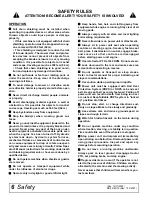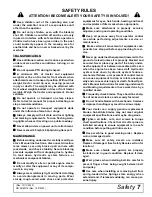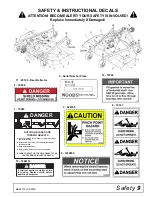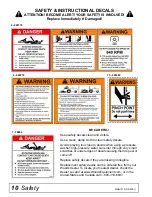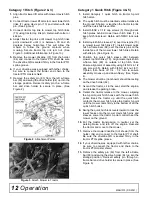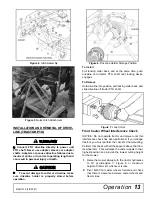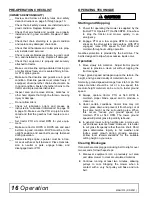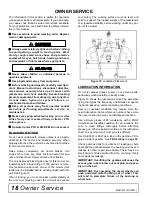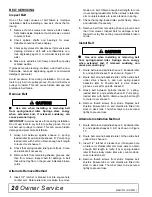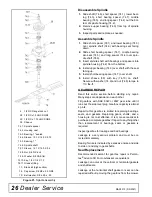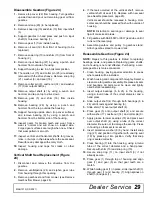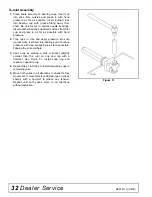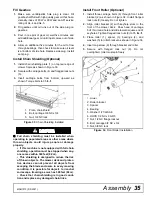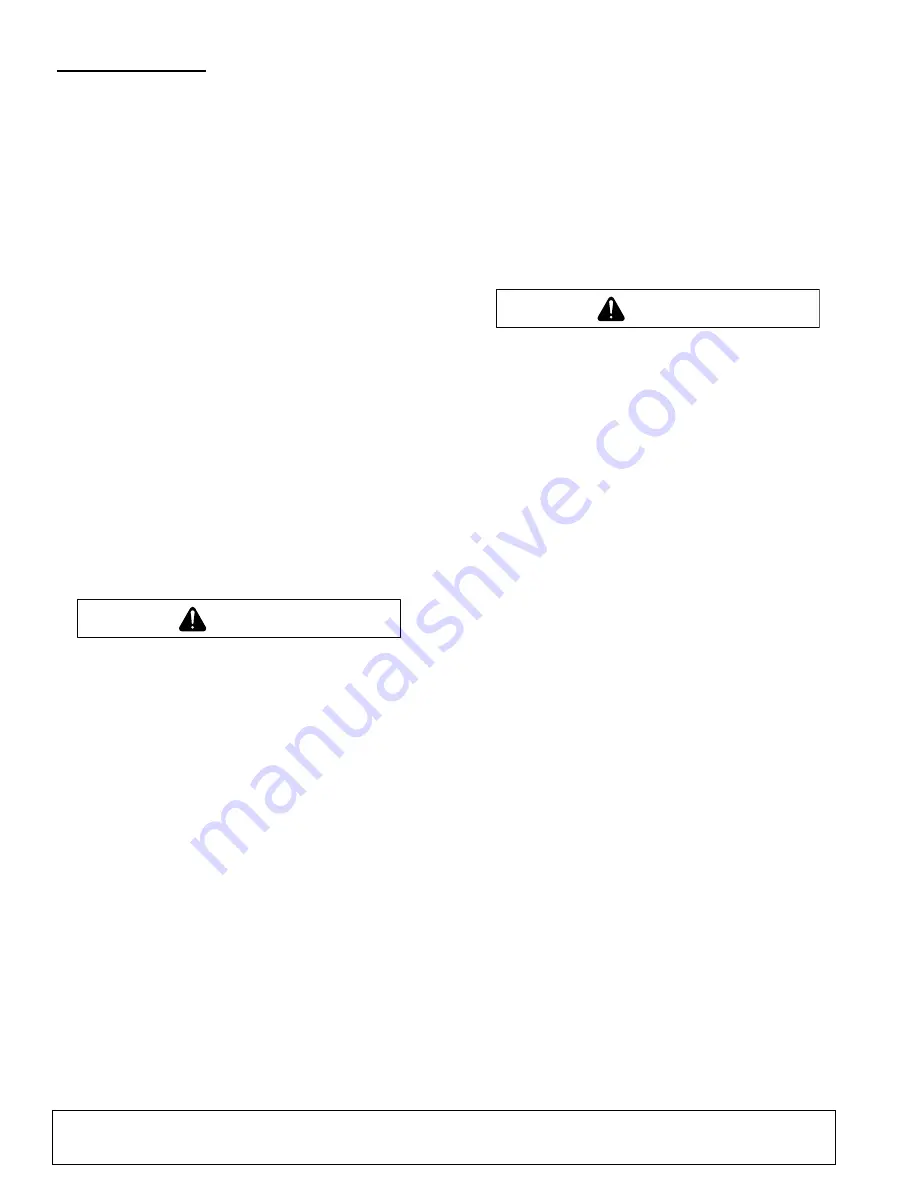
20
Owner Service
MAN1313 (3/3/2021)
BELT SERVICING
Inspect Belt
One of the major causes of belt failure is improper
installation. Before installing a new belt, check the fol-
lowing:
1.
Remove thumb screws and remove belt shields.
Set shields aside. Replace thumb screws on studs
to prevent loss.
2.
Check spindle shafts and bearings for wear.
Spindles should not have endplay.
3.
Check pulley grooves for cleanliness. If grooves require
cleaning, moisten a cloth with a nonflammable, non-
toxic degreasing agent or commercial detergent and
water.
4.
Make sure spindles turn freely and without pulley
or blade wobble.
If grooves require cleaning, moisten a cloth with a non-
flammable, non-toxic degreasing agent or commercial
detergent and water.
Avoid excessive force during installation. Do not use
tools to pry belt into pulley groove. Do not roll belt over
pulleys to install. This can cause hidden damage and
premature belt failure.
Remove Belt
Use care when installing or removing belt
from spring-loaded idler. Springs store energy
when extended and, if released suddenly, can
cause personal injury.
IMPORTANT:
Avoid excessive force during installation.
Do not use tools to pry belt into pulley groove. Do not
roll belt over pulleys to install. This can cause hidden
damage and premature belt failure
1.
Grasp belt between spindle sheave C, spring-
loaded idler B, and spindle sheave D. Pull spring-
loaded idler with belt to obtain enough belt length
to route it over sheave C.
2.
Check that spring-loaded idler pivots freely. Clean
and lubricate if necessary
3.
Remove belt from remaining sheave grooves and
then from mower. Inspect belt for damage. A belt
that will not lay flat on the ground indicates broken
cords.
Alternate Removal Method
1.
Insert 1/2” ratchet or breaker bar into square hole
on idler arm. Rotate idler arm clockwise to remove
tension on belt. Obtain enough belt length to route
it over spring-loaded idler B then slowly rotate idler
arm counterclockwise to reduce tension in spring.
2.
Check that spring-loaded idler pivots freely. Clean
and lubricate if necessary.
3.
Remove belt from remaining sheave grooves and
then from mower. Inspect belt for damage. A belt
that will not lay flat on the ground indicates broken
cords.
Install Belt
Use care when installing or removing belt
from spring-loaded idler. Springs store energy
when extended and, if released suddenly, can
cause personal injury.
1.
Route belt around spindle sheave F, backside idler
E, and spindle sheave D as shown in Figure 17.
2.
Route belt around backside idler G then slide belt
under drive sheave A and over spring-loaded
backside idler B. Position belt in drive sheave
grooves, except for spindle sheave C
3.
Grasp belt between spindle sheave C, spring-
loaded idler B, and spindle sheave D. Pull spring-
loaded idler with belt to obtain enough belt length
to route it over sheave C.
4.
Remove thumb screws from studs. Replace belt
shields. Ensure tabs on end shields are fitted into
slots in deck rails. Thumb screws to be secured
tightly to prevent loss.
Alternate Installation Method
1.
Route belt around spindle sheave F, backside idler
E, and spindle sheaves C & D as shown in Figure
17.
2.
Route belt around backside idler G then slide belt
under drive sheave A.
3.
Insert 1/2” ratchet or breaker bar into square hole
on idler arm. Rotate idler arm clock-wise to obtain
enough belt length to route it over spring-loaded
idler B then slowly rotate idler arm counter-clock-
wise to tension belt.
4.
Remove thumb screws from studs. Replace belt
shields. Ensure tabs on end shields are fitted into
slots in deck rails. Thumb screws to be secured
tightly to prevent loss.
CAUTION
CAUTION

